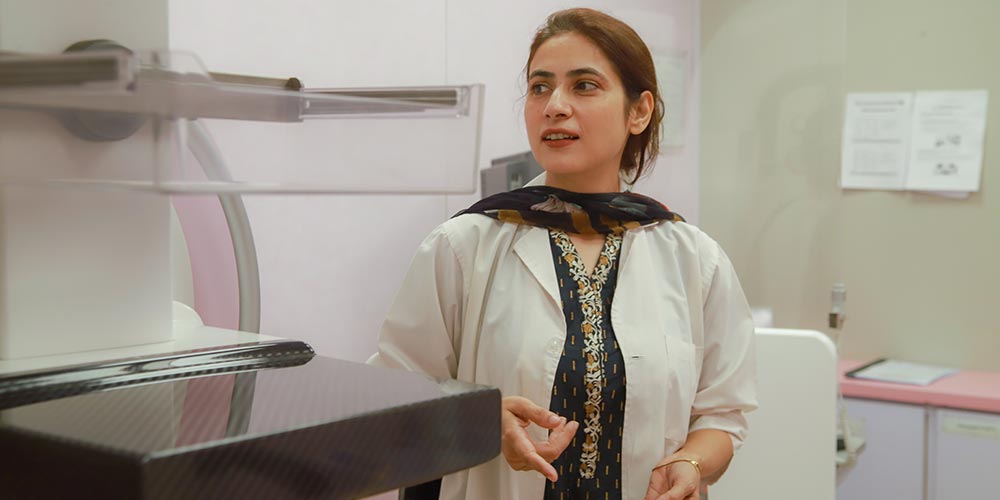Most women in Pakistan are diagnosed when it is already too late. October is recognized worldwide as Breast Cancer Awareness Month. In 1985, Breast Cancer Awareness Month started as a partnership between the pharmaceutical division of Imperial Chemical Industries and the American Cancer Society. Betty Ford, a survivor of breast cancer, helped kick start the event, which lasted for a week.
Originally published in The News International, October 4th, 2020
Read it on The News Website
More attention was given to breast cancer because Betty was diagnosed when her husband, Gerald Ford, became the president of the United States. At the beginning of the breast cancer awareness month, the goal was to make women take charge of their breast health by enlightening them about breast cancer and early detection tests. One of the main goals they intended to reach was to promote mammograms as a vital tool to fight breast cancer. In October, those with breast cancer and those that have survived the cancer are celebrated and encouraged to share their stories. The month is also earmarked for raising funds for breast cancer research and other connected causes. Breast cancer begins when abnormal cells develop out of control. Those cells may also move to areas in the body where they aren’t customarily situated. When this occurs, the cancer is called metastatic. Breast cancer usually starts either in the glands that produce milk (lobular carcinoma), or the ducts that transmit milk to the nipple (ductal carcinoma). It can grow more significant in the breast and disperse to the lymph nodes nearby or via the bloodstream to other organs. Cancer may develop and intrude tissue around the breast. Some take years to extend beyond the breast, while others grow and spread rapidly. When detected early, breast cancer is very treatable. Localized cancer, which hasn’t spread outside the breast, can usually be treated before it spreads. Treatment becomes more complicated once cancer starts spreading. Breast cancer can be detected through mammograms, breast selfexamination, biopsy, and specialized testing on breast cancer tissue. Treatment of breast cancer may entail surgery, radiation, hormone therapy, chemotherapy, and targeted therapy. According to Journal of Pakistan Medical Association, Pakistan has the highest rate of breast cancer in Asia. Nearly, 90,000 cases are diagnosed annually with an approximate 50 percent mortality. We believe the number is much higher. When altered, BRCA1 and BRCA2 are two genes that significantly increase the risk of cancer. According to a study, risk factors for breast cancer in patients treated at NORI Hospital in Islamabad, “BRCA1 and BRCA2 are the two most major breast cancer-susceptibility genes identified and testing for mutations in BRCA1 and BRCA2 is an important tool for predicting breast cancer. Besides lack of breast feeding, diet, less parity and smoking are most significantly factors associated with breast cancer.” We are alarmed by high incidence of breast cancer in the country. Pink Pakistan Trust has already established five breast cancer awareness centres to achieve zero percent mortality rate of breast cancer in Pakistan. These centres promote breast cancer awareness via camps, seminars, trainings and workshops. These centres provide holistic support through counselling, screening, cure and treatment. The trust aims to expand these centres to rural areas with the help of volunteers. Regular examinations can detect the cancer before it takes root. The trust strongly believes that early detection can save precious lives of Pakistani women. The writer is a philanthropist and a doctor devoted to the noble cause of women’s health.
Originally published in The News International, October 4th, 2020

